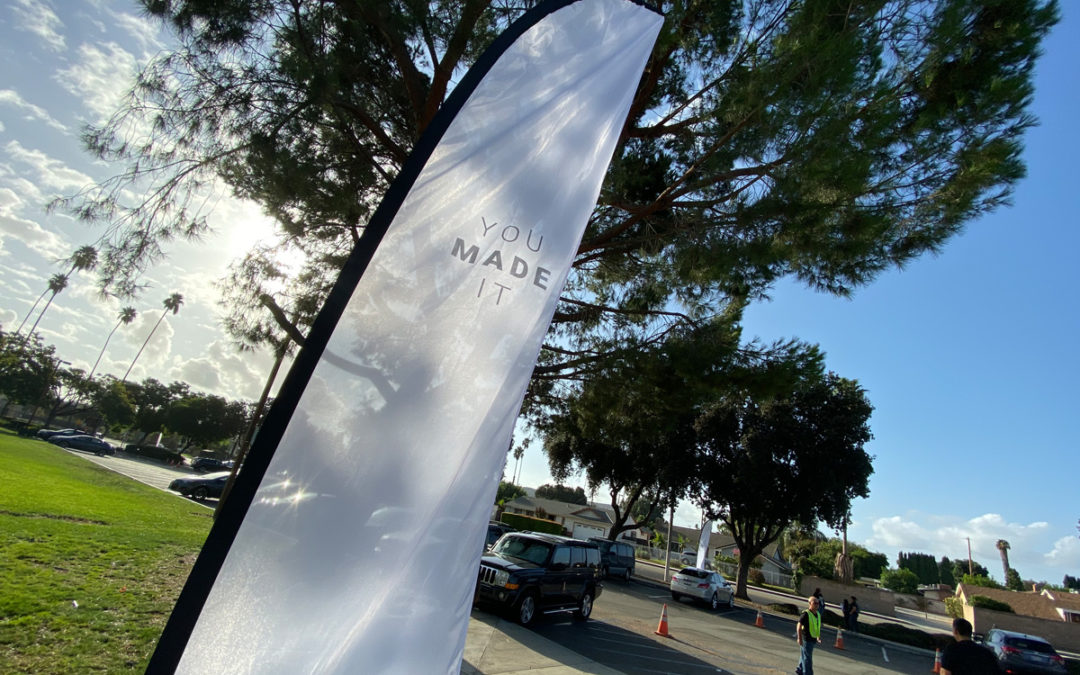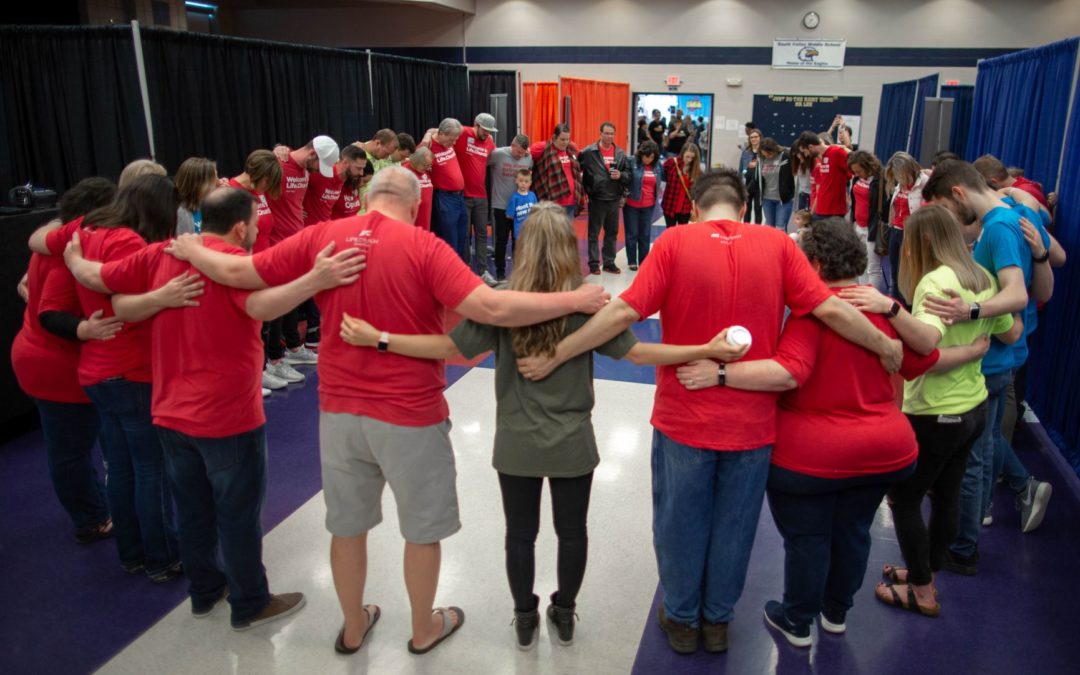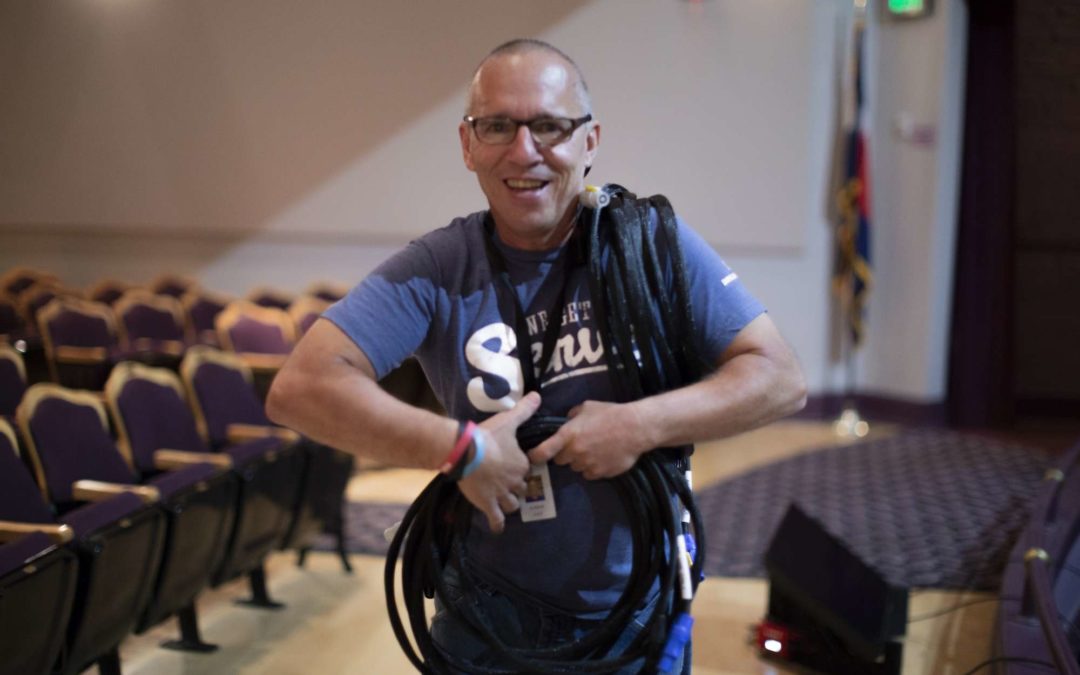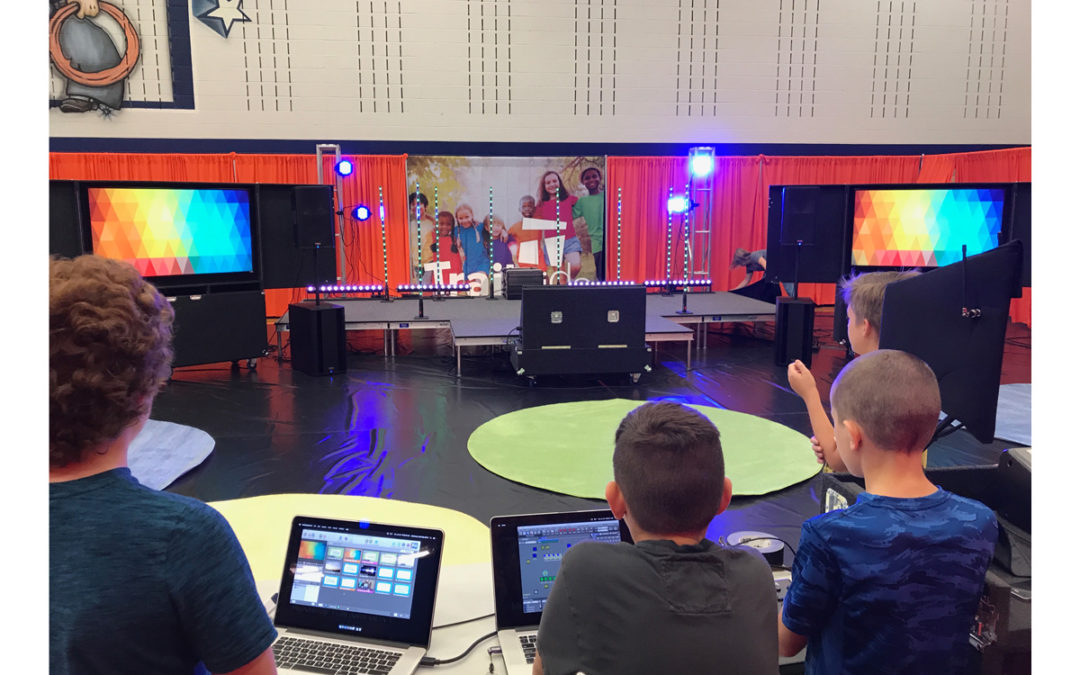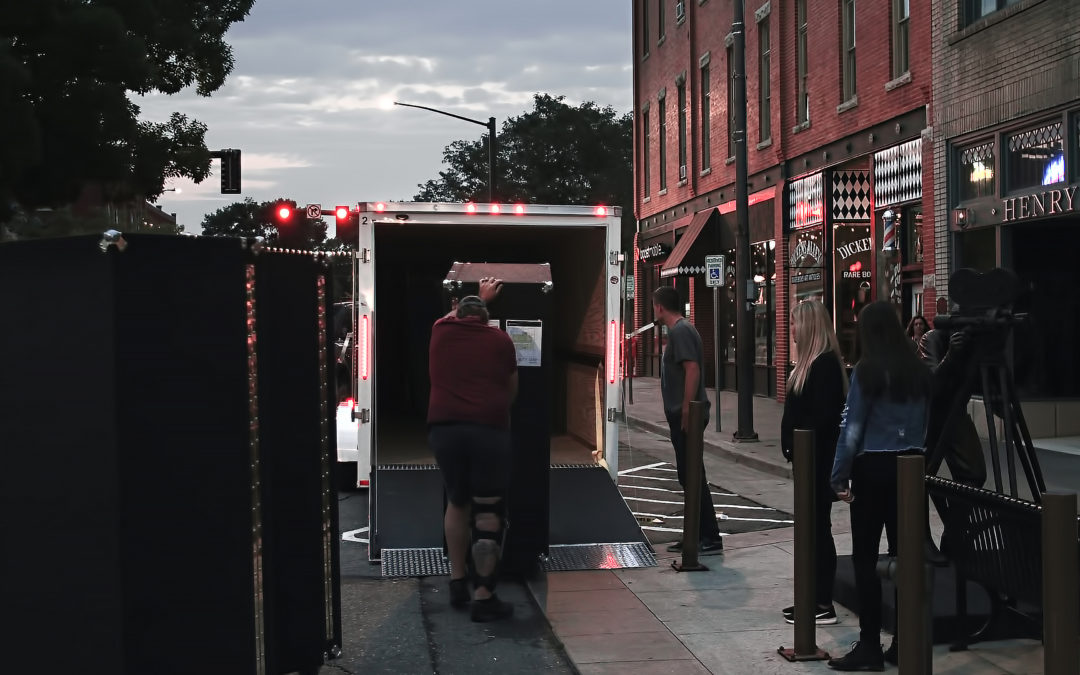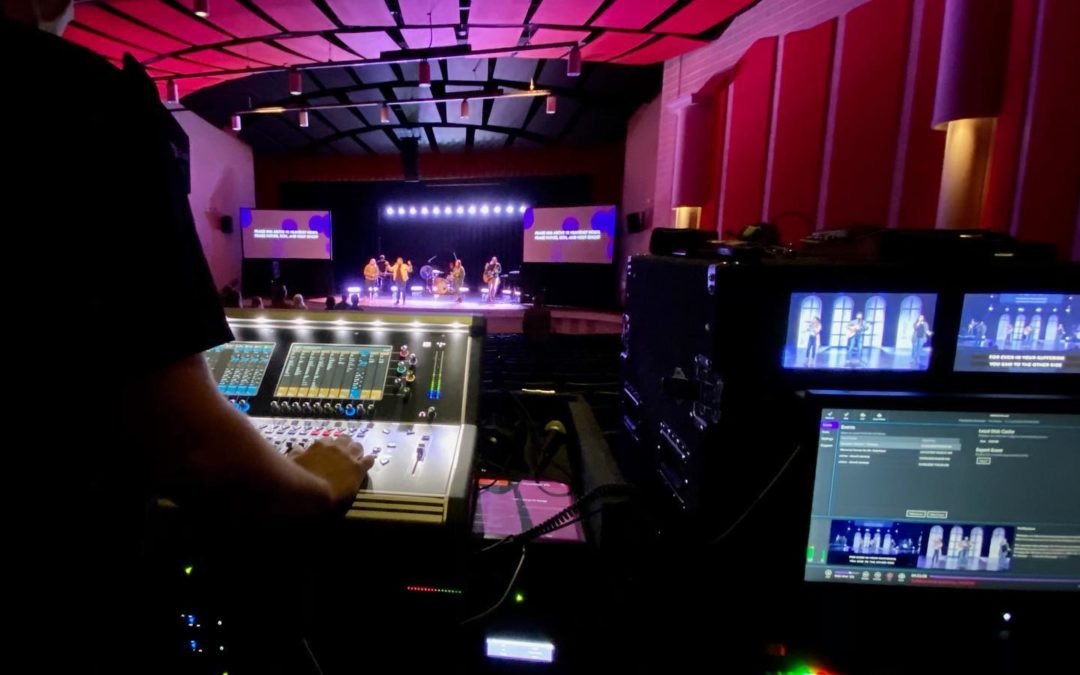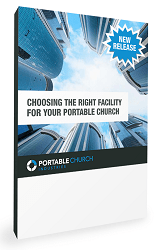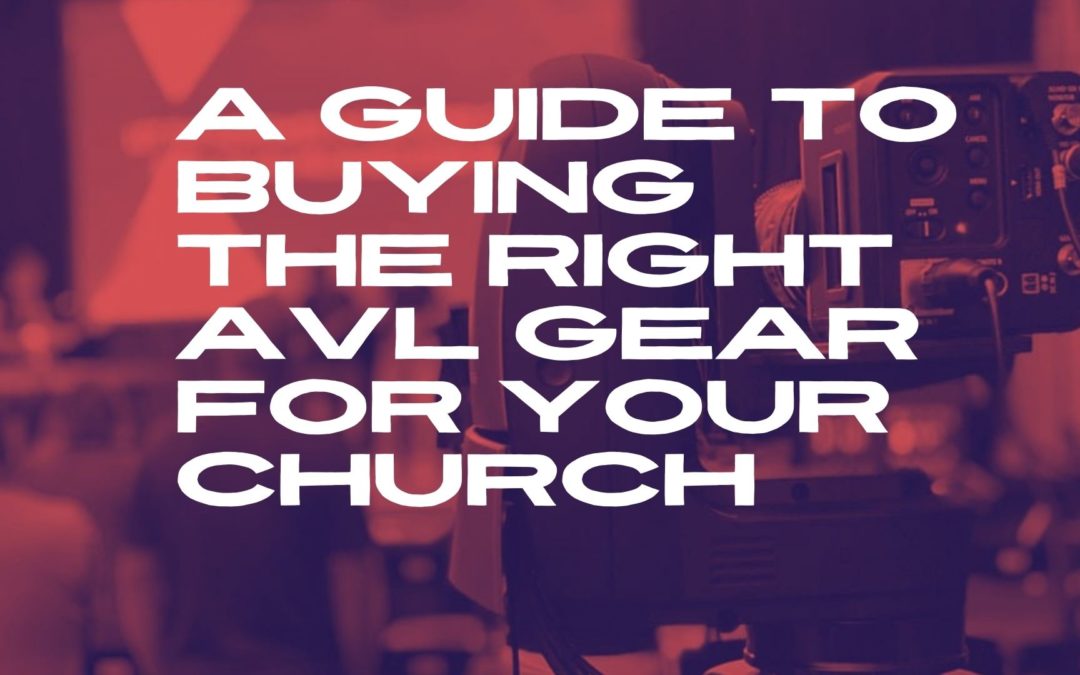
Volunteers
Who doesn’t love Mother’s Day? It is the one designated day when we get to pamper our moms and try to thank them for just being so awesome! And it is almost that time of year again!
Did you know that Mother’s Day is the third most likely day – after Easter and Christmas – that people will attend church?
So, pastor, are you ready to celebrate all the wonderful mothers who will be attending your church services on Mother’s Day weekend? This year, why not go a step beyond a special prayer and time of blessing for mothers? We’ve put together five meaningful Mother’s Day ideas to help you bless their socks off:
Mother’s Day Greetings That Honor all Moms
Mother’s Day can mean different things to different people. For many it represents the celebration of life and great joy. For others it could be a reminder of a struggle or a mark of grief. Take care to ensure that you don’t honor some moms, while alienating others. In an open letter to pastors {A non-mom speaks about Mother’s Day}, Amy Young paid a moving tribute to all moms. You could also consider sharing similar thoughts in your Mother Day’s greetings. Here is a glimpse of Amy’s poem that went viral:
“To those who gave birth this year to their first child – we celebrate with you
To those who lost a child this year – we mourn with you
To those who have warm and close relationships with your children – we celebrate with you
To those who have disappointment, heartache, and distance with your children – we sit with you
This Mother’s Day, we walk with you.”
What other ways can you honor all mothers through your welcome speech?
Let’s Hear it From the Moms
Pick three or four mothers from your congregation and ask them to share their experiences of motherhood. It will be inspiring, encouraging and powerful to hear the real, honest struggles and joys of these mothers. These stories will be reassuring to other moms who might be facing similar struggles. And more importantly, they are bound to stir up new admiration and respect for the thankless job that moms do!
Get the Kids on Video
In the week leading up to Mother’s Day, take video clips of a few children thanking their moms and telling them what they love most about them. This will be especially great if your church is meeting online only. Surprise the moms by playing the video on Mother’s Day. Could a mom want anything more than knowing that her child loves her? This is going to be a tear-jerker. Get the tissues ready!
Teach Kids About Honoring Their Parents
Teach the kids what it really means to honor their mother and father and why it is important. Practice scripture memorization such as Colossians 3:20 “Children obey your parents in everything, for this pleases the Lord” and Ephesians 6:1 “Children, obey your parents in the Lord, for this is right.”
The moms are definitely going to appreciate that! Wrap up by getting the kids to make Mother’s Day cards or crafts they can give to their mothers to have as a keepsake.
What other practical examples can you use to teach kids to obey and honor their parents?
Get a Space for Kids That Will Make Moms Happy
What could mothers want more than a safe and fun environment for their kids? At Portable Church, we take the children’s area very seriously. We have helped many mobile churches set up secure and comfortable children’s spaces in different venues, including a school gymnasium and a movie theater!
Mothers want to know that their children are safe, happy and entertained. When we helped a church in New York move into a movie theater, it turned out to be the ideal venue for their kids’ ministry. We converted the theater into a kid-friendly church by transforming three theater areas into fun and safe environments for different age-groups. The moms loved it!
Are your children’s areas fun, spacious and secure?
Do you have any other Mother’s Day ideas for churches? We hope that you can really bless all the moms that attend your church this year.
Pastor, are you looking to host your church services in a unique, portable venue? We have been helping churches successfully launch in all kinds of venues for the last few decades. Give us a call today at 800.939.7722 and we’ll help you find the perfect venue for your weekend services!
In the meantime, Download our FREE E-book today for all the tips you need to choose the right facility for your church! Find the Right Venue For My Portable Church

Church Planting
Being a portable church presents challenges that a permanent venue often doesn’t have. However it also creates SO MANY other good possibilities that permanent churches don’t have. As we wrap up the last of this 6 week series on Principles of Portability, we hope you have learned that most all of the challenges of portability aren’t really challenges at all. With proper planning portability can be a huge victory for you, your volunteers, and your community! In previous posts we have focused inward on you, your gear and your team, in this post we turn outward with the focus on your city you are working to reach!
Today we focus on breaking down the invisible barriers as first time guests enter your venue.
As you know, newcomers approach a new church with a certain amount of trepidation. They are on alert when they walk through our doors – they will be constantly evaluating and critiquing, especially in our post-Covid culture. However, even pre-Covid many approached church fearful or uncomfortable. It is our job then, as the seasoned church goers, to provide an environment that addresses these unspoken fears.
Some of the basic and common (but certainly not limited to) invisible barriers we have seen center around a lack of signage that can cause confusion on where to enter the building or find the right rooms, having a lack of (friendly) people welcoming new guest, or a parking lot that is difficult to navigate, and many more. Our goal, and I suspect yours as well is to making your church a place where new people can be comfortable and where they want to come back to. Here we list out a few simple, but important ways you can resolve those fears in your rented venues!
1. Make sure you have signs that allow them to navigate around the facility with confidence.
You have likely experienced feeling lost in a space before. One many relate to is walking a new airport upon arrival. Many airports have a lack of signage where you may see one sign pointing you to where you want to go, but then you walk long distances after wondering if you have missed a sign or are still walking in the right direction. Great signage will always allow people to know they are in the right place, which encourages them to let down their guard. This first impression also builds trust in your church whether your guest knows it or not (ie bad signage causes frustrations and lack of trust).
2. Make sure that the space allotted for Pedestrian Flow is comfortable and not claustrophobic in community areas like: Children’s Pick up & Drop Off and Coffee.
This has always been true, but post-Covid will likely be even more so. Especially with newcomers and not yet believers.
3. Provide Accessible Resources for people to learn about your church. You can do this by providing manned tables and unmanned tables for people to pick up literature.
Your visitors will include extroverts AND introverts. Extroverts frequently ‘dip their toe in the water’ by directly approaching and talking with people. Having an additional unmanned resource area allows the introverts in your midst to dip their toe more comfortably.
4. Hosting events or times when you share the vision of your church.
As a portable church, you can do this by having a printed VIP pop-up tent in your lobby for a meet-up or place to sign up for an event. Events can be done between services, throughout the week like in small groups or family dinners for people to learn about the church from other people within leadership or the congregation.
5. Make sure that your Children’s Environments are noticeably safe & secure. First time parents can be really scared to leave their child in a foreign environment.
This starts with a great check-in process and security at the entry points. It continues with great communication, setting expectations and having a room that has been ‘staged’ (think HGTV when a house is being sold). All these things speak volumes and build great trust in you. Big focus points here are working toward having the same teachers week to week that kids can connect with and trust (a common big miss by churches on a tight budget).
6. Create really appealing environments.
We live in a world with a lot of competing factors for attention. Create environments that focus worship, create a family feel and provide a place for the kids to want to come back to!
So to wrap it up…
While this list of invisible barriers is not exhaustive, it can start the conversation of ways to help the unchurched feel more comfortable in your portable setting. And isn’t that the goal? While portable churches already have an advantage here (removes some barrier of a physical church building), there is always room to improve. And we know that these fine tuning, continual improvements are crucial to reach the people in your community and to overall Kingdom growth.
As you have read through these 6 principles of portability, no matter what stage your church is in, we are ready to partner with you as you continue expanding, growing, and moving forward. Run your ideas and thoughts by one of our experts and let’s keep your vision progressing!
Check out principles #1 – #5 or download our eBook for free – here.
Principle #1 – Consider the Weight
Principle #2 – Measure Cubic Volume
Principle #3 – Ease of Use
Principle #4 – System Reproducibility
Principle #5 – Volunteers are your most Valuable Asset

Church Planting, Equipment, Volunteers
3 surprising key learnings from 26+ years of portability!
The first church plant I was a part of as a leader, I gave an outpouring of encouragement, handed out nice gifts of appreciation, and threw grand celebration meals/events. I certainly thought I was valuing the volunteer! But it wasn’t until the next plant, years later that I realized all that I and the church missed out on. The three key learnings below are provided to you as an early heads-up and save you from the same troubles I later experienced!
You likely already noticed the strong emphasis placed on the volunteers in all of PCI’s content. Guaranteeing volunteer success is something Portable Church adheres to very strongly in all of our system designs. As you go through the process of launching a portable church (congrats by the way!), you will be tempted, like I was, to make decisions primarily based on economic factors. This post is here to help dial you into a few of the fruitful ways to truly value and empower your volunteers! After all, if you don’t have engaged, motivated and excited volunteers, you won’t have a set-up team, making long term success that much more difficult!
The 3 Keys
Key 1 – Language matters
Example pastor 1 – “Team, thank you for again coming out today! I know it is a major sacrifice getting up early, getting sweaty, missing breakfast with your family to be here today. But today is going to be awesome. We are going have our own building someday but until then I am thankful for what you do”
Example pastor 2 – “Team! How incredible that we are here again. As we set-up recognize our time as an act of worship and allow it to bring you closer to God. We are exactly where he wants us to be and because of you we GET to save thousands of dollars in building costs and put that toward reaching and engaging the broken parts of our city.”
Small language changes make a world of difference. Making volunteers know like the work they do is critical to changing people’s lives is significant. The language you use plants seeds in the heads of your team. By helping them see the bigger vision and the major positives of the work they are doing, you will find a much healthier culture inside your church. Talking about a future building indicates you haven’t ‘arrived’ yet as a church. Letting them know “we have already arrived”, this is exactly where God wants us, keeps people happy with portability which is a benefit to you church in so many ways.
Key 2 – Systems matter
The second key to success for your set up team is to give them all the right conditions, equipment, and direction to contribute and prevail in Kingdom work! When your team knows you have set them up to win by giving them the right gear in a system, they come emotionally charged and ready to make a difference
An enormous emotional lift is provided to set up teams when they wake up on Sunday morning knowing they will be involved in a highly professional and efficient process preparing the place the community will come to clearly hear about Jesus! When the equipment and gear is systematically transported, unloaded, moved in, set up, used, loaded out, and taken away quickly and safely, the satisfaction meter jumps wildly! Systems win – Chaos crushes!
Plug and play equipment, every piece of gear intuitively in its place every time, all rolled in place in minutes, set up in an hour, and looking beautiful and professional are characteristics of a portable system that grows volunteer teams. Even with the largest pieces of equipment like trusses or a full portable LED wall.
Waking up at 5:30 AM every Sunday, load in and load out that involves dozens of trips with tubs of equipment on two wheelers, the chaos of plugging in all the right cables in all the right holes, and the inefficiency of a box truck with a lift-gate would describe a system that emotionally cripples a set up team.
Within a well-designed system, executing becomes intuitive – coupled with the right purpose it becomes a source of joy. Even large and seemingly unwieldly pieces of equipment can be added to the rotation when put in the right cases and set up by a trained team.
Key 3 – Empowerment matters
We want to make sure your volunteers feel empowered – give them a feedback loop to share their insights and make sure Shepherding Methods are employed to encourage, affirm and uplift your volunteers. A little emotional care goes a long way in a portable environment! This is a very real and very important principle to consider. If your volunteers are easily burnt out, keeping momentum and excitement alive during this important transition for your church will become very difficult. We saw this happen during the COVID-19 Pandemic. Churches who were portable and didn’t have a strong volunteer base really struggled. And launching or re-launching your church or campus should be among the most exciting things your church has ever done, and keeping volunteer satisfaction and happiness at the forefront of your decision making will help keep it that way. Remember, we have “church” for one reason – to share the impact of Christ. And this reason must be maximized during your services. Caring for your volunteers ensures that their energy, their passion and their focus is on that mission too, and on the people coming through your doors every Sunday. The more you trust in their leadership, the greater benefit they will bring to your church.
With these 3 keys in place, this is where hindsight showed my major mistake. My second launch had a thoroughly thought out design in place that was set up in ¼ of the time with less people. But that wasn’t even the biggest impact I saw. The volunteers on this team became far more engaged with those coming through the door. They weren’t just setting up for church to happen, they were actually being The Church. Bam! That was a major eye opener as engaging people for Christ was the whole reason we planted. This simpler system plus the better engagement they got to have had the side benefit of an incredibly small percentage of volunteer burnout!
By putting these 3 major learnings in place at your church, you’ll still want to throw those epic celebrations for them and give out gifts, but you will find a whole different tone of celebration and acceptance. Most important you’ll also find your church body more connected to each other and more activated for ministry.
Where are you in this process? Give one of our launch coaches a call and let’s connect.
*This summary is taken from our e-book 6 Principles of Portability.

Announcements, FlexSpace Design
GOING FORWARD CHANGE is the trend and FLEXIBLITY is the goal!
This post is offered to bring attention to the impact the pandemic of 2020 is having on The Church, and the decisions Church leaders are making in response. Specifically, the response they are making about buildings, building processes, and the economic hardships that can accompany them.
The undisputed #1 trend for 2021 is CHANGE!
Because of recent events, change is not only expected but embrace by church leaders and followers alike.
Most leaders have re-evaluated their mission, methodologies, and resources. Strategic leaders are addressing changes to finances, facilities, and functionality. Many have concluded they got caught flat footed and feel exposed in at least one of these areas.
The #2 trend is FLEXABILITY!
The pandemic has accelerated and exasperated everything in the Church. Strategic leaders responded with innovative thinking. Thus, one could say that The Churches response has been nothing short of amazing!
The mission is still the mission! It will not change! But the methodologies will and must change. Going forward Flex will be a verb of the church! Churches that consistently innovate to new and effective methods will sustain advancements on mission.
Budgets and Buildings must be positioned for leadership to flex to new effective methods with as little constraint as possible. But how does a building become a flexible tool? Strategic leaders are demanding their facilities be as “innovatable” as the methods they envision in the future!
In 2020 the church attendance pendulum has swung from almost exclusively in-person meeting to almost exclusively digital meeting. In 2021, the pendulum will settle nicely. Strategic leaders will identify the most Kingdom-advancing practices of both and embrace them. As Cary Nieuwhof says, “the era of set it and forget it strategy are over! Agility is far less exhausting than decline is.”
Here are 8 ways church facilities can flex to your newest and most effective methods:
Flex #1 – Be Transformed
Imagine how effective a church could be if they magically transformed any space into multiple uses – day to day, week to week, season to season, year to year!
The Transformers (toys and movie characters) for example made instant changes to be most effective where they are right now. At one point they are robots and at another point they are a car, plane, gun, or animal. They became whatever was necessary to win a new way.
Think worship center, to ESL classrooms to coffee house to business incubators…whatever your space needs to be to advance mission.
Flex #2 – Rightsizing Facilities
Imagine designing a smaller facility – having less or no debt, less maintenance expenses, but more uses!
In one form of rightsizing, large regional churches are trying to figure out what to do with space left vacant by new ministry models that attracted people to more and smaller community-centric facilities. In another form of rightsizing, church architects and designers have learned the lessons and are designing spaces that are appropriately sized using extreme functionality. More churches over build than under build – yet more square feet do not equal more ministry capacity.
Flex #3 – Save Money Now
Imagine redirecting scarce resources to mission rather than a building campaign!
The math gets easy now – smaller facilities are a lot less expensive to build, buildout or renovate. Which means less capital funding up front, less leadership capital spent, and less lead time to launch. Reaching the community quicker.
Flex #4 – Save money Later
Imagine the exponential savings in maintenance costs that could be made with a smaller, more effective facility over the course of the next 40+ years!
Tim Cool of Smart Church Solutions shares that, because of ongoing maintenance expense, the real cost of a facility usually will cost about 4x the amount it took build it. Smaller FlexSpace facilities are the gift that keeps on giving. A smaller footprint with simpler infrastructure will keep ongoing maintenance expenses lower for decades into the future.
Flex #5 – Trend Resistant
Imagine seeing a community need you can meet and being able to respond quickly, effectively, and with few speed bumps!
A Strategically led church is likely not doing ministry today the way they did 10, 5, or even just 3 years ago – pandemic or not! Do not let your future ministry innovation be held captive by the facility you have designed.
Flex #6 – Take it to the people!
Imagine being able to take the power of your worship room to an adjacent space, or outside, or across town. We’re talking speakers, video, LED wall, control center, etc.
The days of “build it and they will come” are history (if it was ever true). FlexSpace Design allows a room outfitted with great AVL gear for worship to be pulled and taken off-site into the community. The same thing goes for Hospitality and children’s ministry gear – perfect tools to be used across town or in the next room.
Flex #7 – Engage more and different people
Imagine creating spaces that attract people of different cultures, different interests, or having different needs!
Think of the different people-groups within 10 minutes of your facility: Cultures with unique meeting needs, athletes, schools, civic interests, etc. When a church facility is designed (to flex to your community) with a community centric focus in mind, you expand your capacity to be all things to all people so that by all means (or uses) you might save some.
Flex #8 – Show me the money!
Imagine adding another 10-20% on to your budget simply by making your facility available for outside groups!
Even the church needs revenue. FlexSpace Designs in a church allow you to transform all spaces making them available for revenue generating purposes.
Is the buildout of that new commercial space going to flex to your ministry methods for the next 20-40 years? Consider FlexSpace – the intersection of a permanent facility with portable flexibility!
If these points ring a bell with you – connect with one of our FlexSpace Design experts here. We’d love to hear your story and partner with you!

Church Planting, Equipment
Reproducibility! This is a big deal and likely the most important principle to know…
There may be many reasons you are going to be a portable church. You might be a new church plant, a new campus, selling your building because you outgrew it or maybe due to COVID-19 you’re in-between buildings. Or maybe you’ve read that portability is one of the most affordable ways to launch or how it provides effective environments for growth and outreach. Regardless of your reasons for portability, it is still wise to make decisions about your system that make it easy to reproduce in the future. If you are a multiplication/movement minded leader (if you are planting or campusing this is likely you) it especially makes sense to have systems that can be easily re-done week after week, and also understood and passed on as you plant more churches and campuses. We encourage systems that people will want to do again (and again, and again, and….)!
For the purpose of this blog, let’s say you are a church that has outgrown its building and you are going portable so as to get more space. In the best case scenario, your church continues growth spurts while you are portable. In fact, you have so many people that, even when you move into your new building, you’ll want to keep a portion of your congregation portable (Multi Site, per se). If you make decisions now that take the first three principals into account (weight, cubic volume, and ease of use), you are well on your way to a sustainable, reproducible model of church.
Let’s delve into this concept a little bit more. At Portable Church® Industries, we once worked with a client that placed a very high value on the aesthetics of children’s environments. They had found these children’s tables that were “amazing”. The only problem was, in order to fit these tables inside of their trailer, they had to take the legs off every week. One of our Project Managers gently encouraged them to get one table and then practice, for six weeks in a row, taking the legs on & off and to time their progression. Only two weeks in they found that (a) they rarely had the right tools available for the project (b) the screws used on the legs stripped after the first week (c) it took almost ½ hour to both put the legs on & take the legs off. After only two weeks, the church, said “Thank goodness, we only bought one of these – we definitely don’t want them!” When they put the tables into rotation, they realized that the tables were no longer amazing, that they didn’t make sense for their environment and that it wouldn’t have been a decision they would have reproduced in the future or have been happy about in the future.
If you harness your efficiency properly, you will reduce venue rental costs, increase volunteer happiness, reduce equipment damage, reduce storage space costs, reduce set up & tear down times and reduce number of volunteers needed. All of these benefits tie in directly to reproducibility, and you won’t find yourself like the pastors in our last post saying “we won’t do that again”. When you are able to see a return on investment of time and money, you can anticipate a growth plan that includes future campuses or an aggressive churches-planting churches mission without feeling the dread that may come along with inefficiency. That’s what we LOVE about portability!
A Portable Church system does exactly all these things. The entire system is designed around incredible environments that people enjoy setting up week after week. And once you decide to launch another plant or campus, people are excited to be sent and join the launch! Our systems are designed to allow highly engaging environments that are reproducible, and with fewer volunteers, long into the future.
If this series is striking a cord with you, give us a shout! Engage one of our launch coaches and talk through your plans! We are here to guide you in the right direction.
*This summary is taken from our e-book 6 Principles of Portability. Download the e-book here for more detail and the other 5 principles.

Church Planting, Equipment
We work multiple conferences every year. At every one we go to inevitably we are approached by a pastor that says “I remember portable… we’ll never do that again”. It kills us hearing that as we know it just didn’t have to be that way! After asking why, the answers are common. “It took too long” and “No one wanted to help, it came down to my family and one other staff person, and it was a drag.”
These are driven and dedicated pastors. So how did they get there?
Sometimes, a piece of equipment might be the coolest and best thing around, but if it isn’t easy to use and people don’t want to use it, it won’t get used. Or worse, it will get used, but will contribute to a feeling of malaise and dread amongst your volunteers. Having an efficient system impacts everything – from morale to the pocketbook to the future church plants or campuses for your new church.
Another example we see often are highly complex tech systems.
Many times it’s because you have a high level AVL expert & volunteer that wants to help. We get it! You recognize the talent you have and want a system to make him happy and keep him around. All too often, especially with new start-ups, that tech person doesn’t end up sticking around and leaves behind a system no one else understands.
Other times it’s the draw of wanting to present a large Sunday production. We get that too, however it’s essential to keep in mind the potential expertise, or lack thereof, of volunteer team. A complex Kids, Community or AVL system can quickly become discouraging. This impacts volunteers and vision/momentum. It is completely possible to have incredible systems designed around ease of set-up and use for anyone (and one that keeps the high level AVL volunteer happy too).
As a rule of thumb, if it requires a dedicated expert on the premise each week or you find people avoiding items or areas of your set-up/take-down or storage, then it is not easy to use or reproduce (more on that in our next post). Think about your volunteers in this situation and how it will be for them to use the equipment you buy on a typical Sunday. If it is too hard, they just won’t use it or if they do, they will hate it. And that is something that portable churches can’t afford.
Nothing turns away portable church volunteers like watching others burning out before them.
Over time the feeling can seep deeper into the church and become culture. Alternatively, there is so much potential for your volunteers to absolutely LOVE being a part of set up and tear down and the process of being portable that it would be an absolute shame if they didn’t want to do it because the gear is just too difficult. However, unfortunately we see this often. If a portable church goes DIY and buys the cheapest pieces of gear, there is a good chance they are unknowingly picking items that are very difficult to set-up or operate.
So when considering this topic, here are some questions to run through:
- How Easy is it to Set Up?
- How Easy is it to Tear Down?
- How Easy is it to Train Someone on this Equipment?
- How Long will it take for my Volunteers to feel comfortable with this Equipment?
- Can a first time volunteer operate this?
Are you wondering if you are going too complex with your system? Connect with one of our reps! We will ask some questions and let you know if and where you might be missing the mark! You can email us at info@portablechurch.com or call us at 800.939.7722.
And if you’re looking for more information on the principles of portability, check out Principles of Portability – #1 Consider the Weight, and Principles of Portability – #2 Measure Cubic Volume.
You can also find out more by completing the form below for immediate access to our eBook.

Church Planting, Equipment
If you are starting a church, there are so many things to consider you may not even know where to start…
When purchasing equipment for your portable church, with all the financial pressures a church planter faces, it is easy to focus only on economics. In truth, your equipment purchases must not only reflect the creativity, vision, and personality of your new plant or campus, but the equipment must also be safe, efficient, professional and easy to use.
We have found the equipment purchases for new churches to be simultaneously the most exciting and stressful times in the church launch experience. As such, we hope to ease some of that stress by explaining the different aspects of making sure that your equipment is as portable as possible. Including the importance of cubic volume and ease of setting up and tear down.
If your new church (or new campus) is going to be in a rented facility like a school, movie theatre, art museum, community center, etc – it will be imperative to make sure that your equipment will pack up & move out easily, is light enough to install easily and can handle the consistent packing and unpacking, road noise and travel.
The Cubic Volume Conundrum – a ratio of space to cost
Chairs
Let’s say you are purchasing chairs for your new church. You have found one that is relatively comfortable (comfortable enough, at least, to get you through a forty-five-minute sermon), it’s padded, it stacks and it’s even lightweight – making it perfect for your volunteers. The cost of this chair? Only $20 per chair. You want to purchase 225, and the price tag of $4500 fits the budget quite nicely.
The other chair you’re considering is considerably more expensive at $42 per chair. While the chair seems more sturdy and durable, you’ve not noticed anything considerably better about this chair than the other one. It has all the features of the other one – it’s lightweight, it’s stackable and it’s comfortable, but at a substantial additional $4950 more than the other chair, it doesn’t seem worth it. Is that additional cost really worth the durability?
Surprisingly, you may find consultants like us encouraging you towards the $42 chair. Economically, the choice is clear, so why would we encourage you towards the more expensive chair?
For an average church of 225 people, the cost per cubic foot of storage space is about $10 per cubic foot*
225 of the $20 chair takes up 600 cubic feet vs 225 of the $42 chair takes up 300 cubic feet
Trailers
In our experience, we have found that the average church trailer is between 725 – 1010 cubic feet. A decision to purchase the inexpensive chair will use between 40% – 85% of your total storage space allotted for your all of your equipment purchases. In contrast, a decision to purchase the more expensive chair will use only 30% – 42% of the total storage space allotted.
If you can fit the rest of your church into 15% of your storage space – your choice is simple! Go with the least expensive option! If, however, you find yourself having to move into another trailer or another Konix container, or pay another monthly fee to store an additional trailer somewhere, in order to make space for your other equipment, the numbers could add up to over & above the initial +$4950 for the more expensive chair. That is the reason we might persuade you towards a more expensive chair, because in the long term, your more expensive chair could pay off in a variety of different ways, such as staying in your allotted storage space and keeping your storage space costs within budget.
More storage space leaves more room for additional equipment, helping you “flex” with people growth. One might argue that you can find a lightweight, comfortable chair for less than $42, but in our experience – durability is every bit as important as cubic volume considerations.
Storage costs can vary dramatically depending on your situation. Many churches purchase a trailer and park it somewhere for free. Others rent a trailer parking space. Some churches have access to onsite storage at the facility they rent. Whatever the case, make sure you understand the upfront and ongoing costs of storage so that you can evaluate the cubic volume impact of your equipment choices.
Other Portability Resources
Principle #1 – Consider the Weight
While we are on the topic of things to know when planning for portability, download our resource 6 Effective Principles for Portability for even more helpful information.
*This is based on Portable Church’s experience with churches across the nation, and is based on the average church trailer and / or storage space

Church Planting, Equipment
Launching a church is always filled with excitement! Setting up portably and weekly can and should be fun. However building the right system to keep volunteers engaged and set up fun is big challenge. This 6 part blog series dives into the top (and most important) things to consider before going portable. While there are many more things to consider, these are the top of the list that we look at while designing the industries most efficient and intelligent systems. We have outlined these in even greater detail in our free eBook – 6 Principles of Portability. So let’s dive in with the first principle!
Principle 1: Consider the Weight
Equipment choice is a crucial piece of being portable. There are numerous things to consider regarding each piece of gear, and one of the big things to pay attention to is the actual physical weight of all the gear you’re buying. The first church plant I was on staff with I bought cheaper outdoor signs that ended up weighing so much. It was the one thing that I ended up bringing in every week as no one wanted to touch them. While weight may seem like an obvious consideration, all the reasons may not be as obvious. Here are 3 top weight considerations (most people completely overlook the third one).
Efficiency
The reality of how much something weighs will determine if people can (or want to) pick move and up the equipment you buy. If it requires an extra person to set-up or move it, that takes that person away from other areas. If you have to get special dollies or lifts and wheel it everywhere, that also really slows you down and kills your efficiency. Heavier objects require more effort which leads to more breaks which then leads to more set-up time and often burnout.
Set up
If you end up with something that doesn’t have wheels and weighs 300 pounds, no one is going to want to set that up. Especially when you are setting up in the winter or if there is bad weather, unloading a beast like that would be doubly bad. As much as those in your church may wish they were in peak physical condition, you likely aren’t going to have a volunteer team that is stacked with body builders. You need to make sure the weight of your gear is something an average person can set up and use.
We’ve been called in many times to create safer system for volunteers too. Blown knees, hernias, etc… we’ve seen it all and every church tells us to use them as an example. Making sure you choose lightweight and safe equipment shows that you’ll go the extra mile to take care of the men & women that will be communally setting up and tearing down your equipment on a weekly basis. That kind of care translates into less volunteer burnout and better volunteer ownership.
Trailer
The most neglected consideration is your mobile church trailer weight capacity. Start by checking your trailers load limit… This limit includes the weight of the trailer. For example a 10,000 pound load capacity after removing the 3,500 pounds of the trailer itself leaves only 6,400 pounds of additional weight. Add the weight of the trailer, your cases, and then all the items you put inside of your cases. Before you know it your trailer is over it’s limit. That puts your drivers and others on the road in danger. So when choosing gear, every pound matters and churches find it easy to go over that weight. Because of this, at Portable Church® we use a plywood for our cases that cuts 30% of weight out over typical plywood and the weight of every piece of gear is considered. This allows for more gear and more environments to be stored!
Here are some good questions to ask when thinking through all of this:
- What is a realistic amount that (1) man can carry?
- How much are the (4) wheels (on my case) rated to carry?
- What is the weight of my storage case empty?
- How much does my storage case weigh with the equipment inside of it?
- If this weight exceeds what is reasonable for (1) man, how many men can reasonably carry this item?
- Can this equipment (storage) case be safely maneuvered by (1) man?
- How much can my trailer (or box truck) carry?
- Can this item, at its weight, be safely lifted over someone’s head?
- How high do we need to lift this item to place it in the storage vehicle? Can we do this safely?
- Will people WANT to move this week after week?
All of these questions might not pertain to you, but you can see how weight plays a pivotal role in not only choosing your storage / transportation method, but also in determining the make/model and type of equipment you will purchase for your portable church.
At Portable Church® this is just one of many dozens of things that go into designing an intelligent system. The signs I mentioned earlier are just one example. When I joined PCI three years later I saw the same sign but less than half the weight. As a leader in the church I realized the money I saved up front carried a much longer term cost overall.
Other Portability Resources
Principle #2 – Measure of Cubic Volume
*This summary is taken from our e-book 6 Principles of Portability. Download the e-book here for more detail and the other 5 principles. Have questions, reach out to one of our church launch coaches here!

Church Planting, Facility
Finding the right location to launch is crucial for any church plant. After all, the church location and venue play a key role in how effectively your church plant reaches and engages the community.

Are you looking for the ideal place to launch your church? Well, look no further! Here are seven tips to help you zero down on that perfect location:
1. Ask God to give you a burden for a specific place
Jesus is building His Kingdom! If God has called you to plant churches, He will also reveal where He wants you to start.
Ask God to give you a burden for a particular area. Pray without ceasing! After all, solid prayer and passion are the foundations of any successful church plant.
Has God placed a burden on your heart for a specific town, area or community?
2 Look for areas devoid of churches
Did you know that only 50% of Americans are church members? There are many pockets across the country with a high concentration of people, but little or no church activity. The Northeast corridor, for example, has nearly 20% of America’s population, but very few churches to match.
Zero down on the areas where there are fewer churches. Are you ready to go where the need is the greatest?
3. Talk to other pastors ministering in the area
This is the time for Kingdom collaboration! Irrespective of their denominational differences, church planters and pastors are increasingly coming together to reach out to their cities.
Let your church plant be a result of such a collaboration!
Consult with other pastors who are already serving in the city/town that you feel called to. Ask them where the greatest need in their city is, and identify the challenges of the specific communities in the area. Most importantly, ask them to support you in prayer as you seek to obey the Lord’s calling on your life.
Are you ready to collaborate?
4. Consider the layout and facilities
Finalizing the area that you will call home is just half the battle won! The next step is to find that perfect venue. And, there’s so much to consider!
It is a good idea to look at the venue from a visitor’s perspective: Is it easily accessible? Does it feel cramped and dingy? Does it have adequate parking spots and clean rest rooms? Is there ample meeting space for both adults and kids?
In addition, you will also have to think about facilities such as a kitchen space, lighting and stage setup.
Are you looking at potential church venues from the eyes of a visitor?
5. Think about the costs
It’s no surprise that the potential cost of setting up a church can be a deal-breaker. You might find the perfect facility with the accessibility and welcoming atmosphere you were looking for. But, if the numbers just don’t add up – you’ll be heading back to square one!
It is important to factor in all the costs involved in moving into a new facility. Will you be paying monthly or quarterly rent? Will there be additional equipment that you might need, in order to set up in a particular facility? Don’t forget to include any ongoing expenses, like electricity or cleaning services, while doing the math!
Have you made a list of all the costs involved in launching your church?
6. Consider equipment requirements
Setting up your church in a community center would require you to arrange for different gear than launching in a restaurant would. For example, a school might allow you to use their projector for your weekend services. A movie theater, on the other hand, would save you the trouble of bringing in chairs and an additional screen. Think about the specific equipment requirements for each potential church venue.
It’s also important to ask about on-site storage facilities. If you are launching a portable church, it will be helpful to be able to store your gear at the venue. If such a facility is not available, you could consider customized, portable cases like the ones Portable Church offers. These enable mobile churches to roll their equipment in and out every weekend with ease!
Are there any specific equipment requirements for your potential church venues?
7. Make sure that the venue matches the vision of your church
It is important that your church venue compliments the character, vision and mission of your church.
If your church has the heart to engage the unchurched, the warm and casual atmosphere at a bowling alley or a pizza parlor might be a good choice. If children’s ministry is a priority, then consider a facility which will let you create multiple safe and fun environments to cater to different ages.
Will the people whom you want to minister to, feel welcome at your church venue?
 At Portable Church, we know that the needs of no two churches are the same. Over the last few decades, we have helped many church planters find and move into the perfect venue to suit their needs.
At Portable Church, we know that the needs of no two churches are the same. Over the last few decades, we have helped many church planters find and move into the perfect venue to suit their needs.
Give us a call today at 800.939.7722 and we’ll help you find the right church location to call home!
In fact, here’s a FREE e-book with all the tips you need to choose the right facility for your church. Get your copy and Find the Right Venue For My Portable Church today!

Equipment, Technology
Know the differences between Portability vs Permanent vs Touring Gear vs DIY
In a new church ministry (aka church plant), the audio/visual/lighting needs will likely be your largest expense. Determining what gear you need can only come after clarifying the purpose for having AVL in your ministry, and the context in which your ministry will take place.
When considering the competing points of tension in making AVL decisions, the two primary elements that will dictate what a supporting AVL system can look like are budget and venue. Knowing where to look to get the right AVL System will help with both, (regardless if your budget is small or large).
All AVL gear for a church (regardless of size) needs to be integrated into a design that fits both of the above; your budget and context. These will fall into one of three types:
Portable System Design, Touring System Design, and Permanent System Design. After describing each of these design types, we will also dive into the Do-It-Yourself method
PORTABILITY DESIGN
- The Portable Context – the venue is a rented facility (school, YMCA, theater, community center, event center, etc.) and is the same each week you meet. However, you can only occupy he venue for a brief period (6-8 hours) in which you need to load-in, do church as many times as necessary, and then load-out.
- Things to Consider – Budget and convenience usually drive the use of this design. Rented venues are usually well known by the greater community in which you want to launch and inherently provide ample parking, access, function and flow, and dedicated space. You are going to ‘pay’ for portability somewhere, either on the right system or in human resources. A good Portable AVL design is quick and easy to load in and out, highly systematic, presents a very professional image, and allows a volunteer team to thrive in the process.
- The Pros of Portability (using a PCI SYSTEM)
-
- Volunteer friendly
- A complex system created to be intuitive for volunteers to set up
- Load in and set up in facility in 30-50 minutes (on average)
- Load out of facility in less than 20-40 minutes (time is $$ here)
- No special access needed
- No loading docks
- No wide doors
- No extraneous ramps
- Parking lots, or whatever, work great
- Integrated plug and play AVL design
- EVERYTHING fits through standard doorways
- Cases designed to protect expensive gear
- Excellent efficiency, effectiveness, and impression
- Comprehensive to include worship, children’s ministry, first impressions, trailers, and storage
- Cases and trailers balanced for weight distribution
- Launching as a portable church is the least expensive way to launch a new presence into a new community
- The Cons of portability (all portability systems)
- Set up and tear down each week
- Higher need for volunteers
- A bad design causes significant burnout
- To do it right, some pieces will cost more
TOURING DESIGN
- The Touring Context – Because touring groups are in a new venue for each performance, the touring design in response to the need to be ready for any new situation or environment that might come up from week to week.
- Things to Consider – Will you be in the same facility from week to week, or encounter a new facility and environment each week? What will the access be at each new facility? Will there always be a dock to load in and out of?
- The Pros of a Touring System
- Expensive gear is protected really well
- Load in/out processes can be similar to portable
- Usually have a gear-solution on hand for every situation
- The Cons of a touring System (in the context of a church meeting portability)
- Gear storage is usually overkill in rented situations
- Cost of gear storage is prohibitive
- Often designed around the use of a hi-lo
- Usually requires extra gear for unforeseen circumstances ($$)
- Gear is stored/transported in individual cases – need for flexibility decreases efficiencies
- Usually assumes loading docks, or box trucks with lift gates (slower and inefficient, also unsafe for non-professionals)
- Size of gear storage sometimes at odds with size of doorways available(they assume large doorways)
- Usually designed for sophisticated users and crew (paid professionals)
- Load in and load out times are longer (touring assumes multiple hours or overnight set-ups)
PERMANENT INSTALL DESIGN
- The Permanent Context – Facility under your control 24/7. Typically, spaces can be dedicated to specific use(s).
- Things to Consider – Facility spaces as well as AVL uses are typically designed for known ministry patterns. As often as ministry patterns change over a period of decades, can the AVL design respond appropriately to change?
- The Pros of a permanent Install System
- Opportunity to set and forget lighting, video gear, controls
- Usually, infrastructure constructed to support AVL structures
- Can accommodate a large range of sophistication
- Most gear can be adjusted by individual technicians
- No set up and take down process
- The Cons of a permanent Install System (for a portable church)
- Cabling is buried inside conduit and left alone, durability is less a consideration
- Ease of handling isn’t needed – Handles, durability, weight is not a primary consideration
- Speed of set-up and take down isn’t a consideration in the design of the system
- Once a permanent system is installed it is ‘set and forget’ – These designs are not inherently volunteer friendly
- Complacency over time
- Lots of cost outlay
- Less flexibility
DO IT YOURSELF SYSTEM DESIGN
The last design method to consider is the DIY system. We understand the allure to doing it yourself. It’s a real option that some simply have to consider. Pastor, we LOVE what you are doing and our main drive at PCI is to help you focus on building kingdom in your cities and peoples lives. However, we also want to help you consider all the costs to take into consideration.
The popular thought is “if I do it myself it will be cheaper.” There is no doubt that a cheaper system can be purchased. But low up front cost obviously doesn’t mean it will be the least expensive. Initially, you only know what you know, and you absolutely don’t know what you don’t know. With an extreme amount of AVL knowledge, AVL Integration/Production Experience, and access to well-priced and diverse gear selection for audio, visual, lighting, acoustics treatment, and staging, a good system can be designed and built. But the skillset for designing an excellent portable system is rare to find. This typically leads to a design that is not built for maximum portability. The costs of this is extreme volunteer fatigue and burnout, incorrect gear choices, longer set-up time, higher facility rental costs, frequent damage to gear, and an unsustainable system among other things.
We have found that when churches buy the right system up front, the initial higher investment is frequently paid back many times over and both the user and church visitor experience is better week after week.
Ultimately, we want you to be a success.
Whatever you are considering we encourage you to connect with one of our portable experts to help you process your thoughts to get you ready to launch strong and thrive for years to come!

